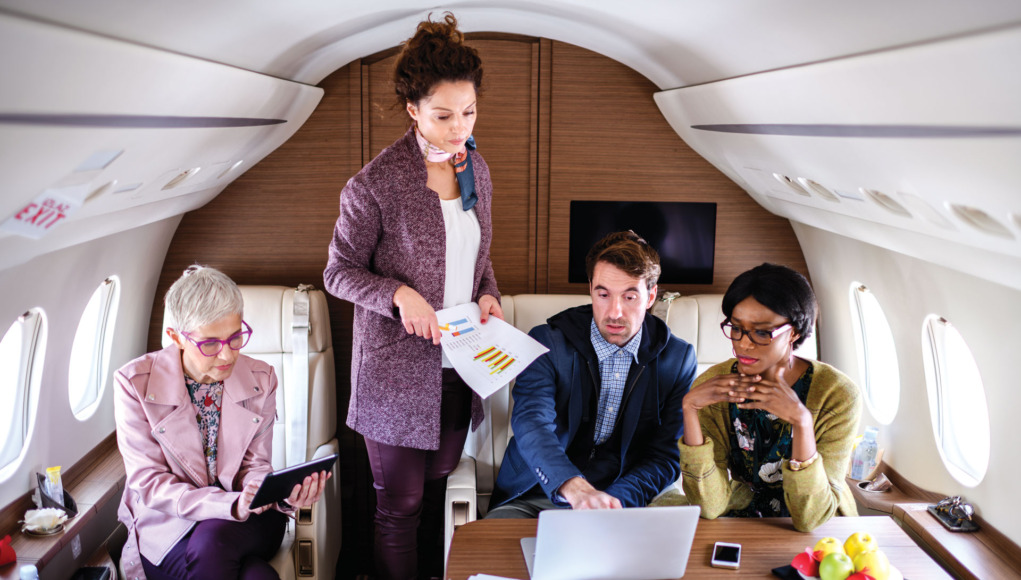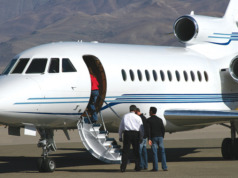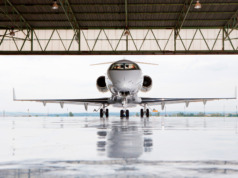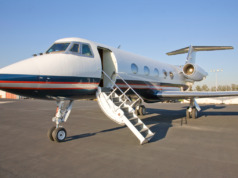The Tax Cuts and Jobs Act (TCJA), enacted on December 22, 2017, contained a number of great Christmas gifts for business aircraft owners and users in its more than 400 pages (See “Capitalizing On The TCJA,” BAA May/June 2018).
Some of the well-publicized positives of the TCJA include lower income tax rates for both individuals and corporations, as well as the expansion of 100% Bonus Depreciation expensing. This favorable depreciation change, fully extended through December, 2023, now is also available to used aircraft. But to pay for these goodies, the TCJA includes a number of “Scrooge” provisions.
One of the most far reaching of these is the new rule eliminating the tax deductibility of all entertainment, amusement, or recreation expenses, even if such expenses are directly related to business activity. Business aircraft now are treated like a country club membership or an athletic event sky box. The IRS definition of “entertainment” includes travel to and attending sporting events, including participating in activities such as fishing, golfing, hunting, and skiing. The presence of a business activity or rationale is not taken into account.
Under the TCJA, when a business aircraft is used to travel for entertainment purposes, the operating expenses which are disallowed as a tax deduction include all of the variable costs (Direct Operating Costs, or DOCs) incurred to make the trip possible. Variable expenses include the amounts expended for fuel, maintenance, catering, and trip expenses of the crew and aircraft (handling, airport fees, navigation charges, communications, etc.).
In addition, non-deductible expenses related to entertainment trips include fixed costs associated with the aircraft operation. These fixed costs include expenditures for crew salaries, insurance, hangar rent, aircraft lease/interest payments, and tax depreciation. These new entertainment rules now treat this usage just as unfavorably as trips taken for personal purposes.
The eliminations of these expenses as tax deductions will dramatically increase the net after-tax cost of operations for companies that use their aircraft for entertainment purposes.
For example, a mid-size jet flew a total of 400 hours this year. The aircraft was used heavily (80 hours, or 20%) for client entertainment use, and has DOCs averaging $2,500 per hour. Variable expenses thus total $1 million this year. In addition, fixed costs, including tax depreciation, added another $2 million, so the total annual expense to operate the aircraft was $3 million. The amount of expenses that no longer are tax deductible equals $600,000 ($3 million x 20%).
So, at the new reduced corporate tax rate of 21%, the company’s U.S. Federal income taxes will be increased by $126,000 ($600,000 x 21%). And the company’s state income taxes also are likely to be higher. Under the old entertainment rules, the company could have flown an additional 50 hours per year ($126,000 / $2,500) at no additional cost.
What is not yet clear is how trips with multiple purposes (a combination of business and personal or business and entertainment) will be treated.
What Do These Changes Mean for You?
With the new tax regulations in place and previously allowed tax deductions at risk, you will need to be even more vigilant in keeping accurate and timely records to substantiate and document the use of your aircraft. Why is this so?
Keeping good records will be especially helpful if, at a much later date, a government entity such as the IRS or FAA knocks on your door with questions on aircraft usage. In years past, it might have been acceptable to maintain records that informed the questioning agency: “Seven souls on board for a business trip.” Going forward, you will be better served to record each passenger onboard the airplane on a leg-by-leg basis, along with the exact purpose of their trip.
Like many executives, you may have access to and use of the company aircraft for personal or non-company business travel as part of your compensation package. Keeping detailed records is critical in calculating any additional taxable income that needs to be allocated to you, other executives, and/or your board members.
Records also help allocate deductible costs among the various departments which have access to the aircraft, so that each is properly charged for their use. Business uses may include, for example, executive travel to suppliers or vendors, sales tours among key clients (not client entertainment; travel to and from locations to optimize use of executive time instead of using inconvenient commercial airlines), attending other industry or business related functions and events.
If yours is a publically traded company, it must follow strict Securities and Exchange Commission (SEC) reporting rules. These include reporting officer compensation for the CEO, CFO, and the three next most senior corporate executives regarding their use of the corporate jet. If the reporting is not done correctly, not only can the SEC pursue your company and assess substantial monetary fines, you also run the risk of damaging your company’s reputation.
If your company does not already have such a document place, strongly consider creating and implementing a Business Aircraft Utilization Policy. This Policy should detail who has access to the aircraft and when, as well as what types of trips can be taken. To assist with documentation, you can use a “trip sheet” to record the specifics of the flight including date, time, and destination, purpose of the trip, and listing of the passengers, along with their affiliations. You may delegate to a crew member the responsibility of checking off that the listed passengers are indeed on board and that a use purpose has been provided for each.
The “purpose of the trip” section should provide details as to when the aircraft is used for Business, Business Entertainment, or for Non-Business (Personal Use) purposes.
“Personal Use” should provide further details, such as if the trip is for a vacation, entertainment use equivalent, or a non-entertainment use like commuting, education, attending a funeral, a health or medical appointment, attending a charitable event, or traveling to an outside meeting. How your company handles and documents these examples of non-entertainment personal use trips will determine whether or not they may be partially deductible or completely non-deductible.
In summary, the after-tax cost of using your aircraft for entertainment purposes has gone up quite a bit. However, good recordkeeping can both defend and maximize the deduction of some trip-related costs. Since this area of the new tax law can be very complicated, it’s always best to seek the advice of competent professionals to assist you. BAA
Alan Goldstein, CPA, is a Special Advisor to Flight Department Solutions. With 30+ years of flight department management expertise, he holds an MBA in Taxation and is a past Chairman of the NBAA Tax Committee.





